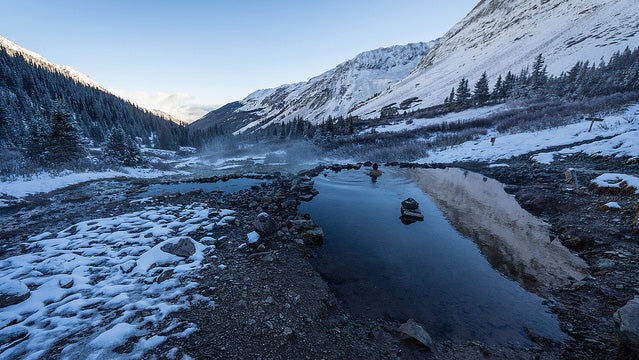Why would you soak in the summer when you can head to the hot springs in winter instead, and submerge yourself in a steaming pool while ice crystals form in your hair?
The Snow Report
The latest snow, ski, and winter sports stories from ║┌┴Ž│į╣Ž═°.Some natural hot springs remain incredibly basic: a hand-built wall of rocks to keep the warm water pooling in one area before it flows away. Others are so developed that they might as well relocate to the Wisconsin Dells. Personally, I like the springs that land somewhere in the middle, with a few amenitiesŌĆöchanging rooms, towels, showersŌĆöbut a mostly natural setting.
░õ┤Ū▒¶┤Ū░∙▓╣╗Õ┤ŪŌĆÖs Conundrum Hot Springs falls at the undeveloped end of the spectrum. Near Aspen, theyŌĆÖre reached by an 8.5-mile hiking trailŌĆöno chlorinated water or accompanying day spas here.
The three Rocky Mountain hot springs maintained by Parks Canada are more built up: Radium Hot Springs, in Kootenay National Park, is CanadaŌĆÖs largest hot springs pool. Banff Upper Hot Springs is right in town, and has been warming visitorsŌĆÖ bones since the 1880s, while Jasper National ParkŌĆÖs Miette Hot Springs is a bit more remote.
Thermopolis, Wyoming, is a town dedicated toŌĆöand named forŌĆöits hot springs. There are a couple of private, developed pools here, but the State Bath House, in Hot Springs State Park, is free.


